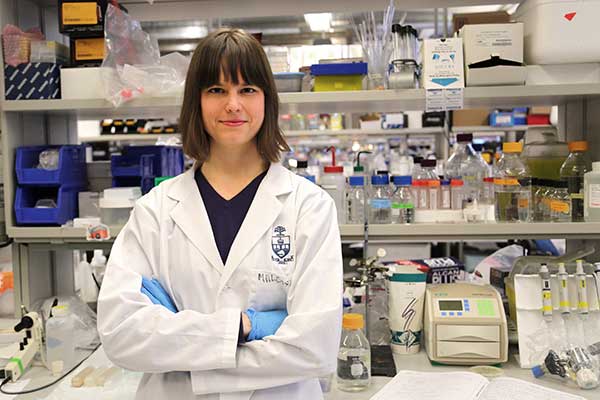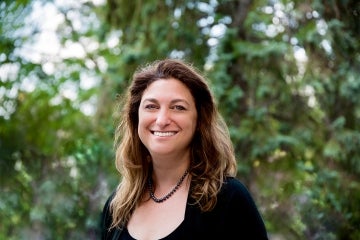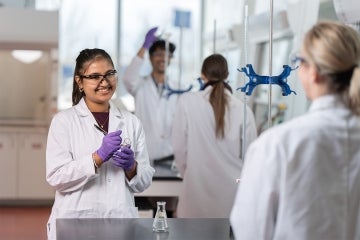
U of T biomedical engineers may have solved the problem of protein binding
Published: March 17, 2016
Spinal cord injuries don’t heal like cuts or broken bones. Why? Part of the reason is the formation of scar tissue that acts as both a chemical and physical barrier to nerve regeneration.
One protein, chondroitinase ABC (ChABC for short), is known to break down these scars and let damaged nerve tissue heal. But to be effective, the protein needs to stick around the scar site over a long period – just as long as it takes the damaged nerves to regrow.
“Right now, the way researchers use chondroitinase ABC is to do long-term infusions with a catheter into the spinal cord, or administer multiple injections,” says Dr. Malgosia Pakulska. “If we could design a system to release ChABC over a longer period, we could deliver a more effective one-time treatment.”
This is true for many of the protein therapeutics under investigation today for a range of medical applications, from diabetes to stroke.
Time-release drugs are a familiar concept – we can buy versions of fast- or slow-acting painkillers at the pharmacy. But the same techniques that work for small molecules, such as enclosing them in tiny degradable capsules or “microspheres,” don’t always work for proteins. Coating can cause them to lose their unique shapes, which are the key to their function.
To put proteins to work in treating conditions ranging from macular degeneration to heart disease, we need new methods of getting those proteins to stay at the treatment site for as long as they’re needed, without damaging their structure.
For ChABC, Pakulska took advantage of an up-and-coming technique called affinity-controlled release. By mixing ChABC into a hydrogel – a Jell-O-like material that can be injected at the injury site – and including a molecule that can reversibly bind to ChABC, she can slow its release.
“Think of the hydrogel as a hallway with a Velcro carpet,” explains Pakulska. “You’re the protein, and you’re wearing Velcro socks. You can still walk away down the hall, but you go more slowly, because with every step you have to ‘bind’ and ‘unbind’ from the floor.”
The bottleneck in designing such systems is finding an appropriate binding partner for your protein of interest. Pakulska and University Professor Molly Shoichet, of the department of chemical engineering & applied chemistry and the Institute of Biomaterials & Biomedical Engineering, have outlined the best techniques for discovering molecules that will bind to promising therapeutic proteins, potentially eliminating this bottleneck.
Their review paper was published on March 17 in the leading journal Science.
Pakulska hopes that this work will spark discovery of many new binding partners for promising proteins.
“Right now, we’re limited to using proteins and binding partners that occur naturally,” she says. “In the future, I hope this will allow us to design much more tailored treatments. For example, we could say, ‘I want a seven-day release profile, so I’ll use this particular binding partner.’”
Having completed her PhD in the Shoichet Lab in 2015, Pakulska is now a project manager for Medicine by Design, a leading centre in regenerative medicine. Shoichet is one of its principal investigators and lead for the Tissue by Design pillar.
Read more about Medicine by Design
They carried out this work in collaboration with Dr. Shane Miersch of the department of molecular genetics.


